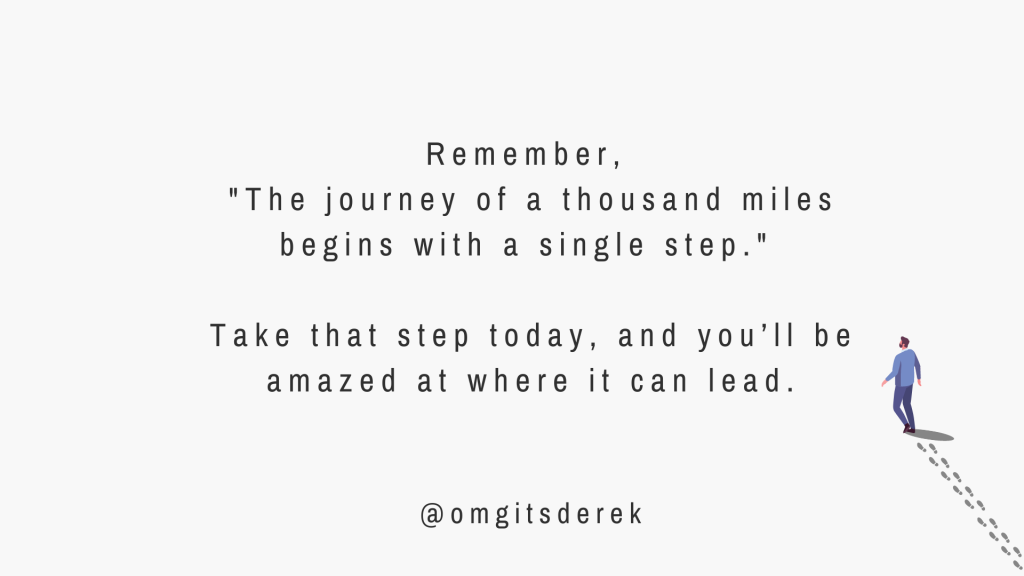Introduction
Have you ever felt the crushing weight of trying to make ends meet while carrying the full responsibility of raising your child on your own? The sleepless nights spent worrying about how you’ll cover the bills, the fear that you’re not doing enough to secure your child’s future, or even the frustration of feeling like you’re always one step behind. And for those who’ve faced the added pressure of a custody battle, the stakes are even higher—because it’s not just your life on the line; it’s your child’s future.
When my world turned upside down during my divorce, I found myself in a battle I never expected—fighting for the right to be present in my son’s life. It wasn’t just about winning a legal case; it was about securing his future and making sure I remained a constant, positive presence in his life.
But here’s the truth: the only reason I was able to fight as hard as I did to secure equal custody and shared parenting was because of the financial systems and mindset I had in place long before I ever became a single dad.
These weren’t just random strategies—they were the very steps that made the difference between winning and losing my son. Without these financial foundations, I wouldn’t have had the stability to hire the lawyers I needed or to cover the exorbitant fees that come with fighting for your child. And I know I’m not alone—many fathers lose this fight not because they lack the will but because they lack the financial means.
It’s a harsh reality that far too many of us face.
But it doesn’t have to be this way. Whether you’ve lost a custody battle, are fighting one now, or are simply trying to build a better future for you and your child, it’s never too late to start creating the financial foundation you need.
The strategies I’m going to share in this post aren’t just about saving money—they’re about creating the stability and security that can give you a fighting chance no matter what life throws at you.
Building a Budget that Works
When I first started budgeting, it was more of a checkbook-style approach—I was focused on tracking my overall balance and making sure I wasn’t overspending.

It worked to some extent, but I realized I wasn’t getting the full picture of where my money was actually going. This realization hit me one day when I decided, out of curiosity, to add up how much I’d spent on dining out that month. I was shocked by the amount. Although I was staying well within my overall budget, seeing how much I was spending on just one category made me rethink my habits.
This experience led me to switch to a category-based system, which allowed me to see exactly how much I was spending in different areas of my life like dining out, entertainment, or utilities. By categorizing my spending, I could pinpoint where I was overspending and make adjustments. For example, after realizing I’d spent $300 on dining out in a single month, I made a conscious effort to cook more at home. It’s a bit more work than just tracking your total balance, but it’s worth it for the insight and control it gives you.
Over the years, I’ve tried different apps and tools to manage my budget, but what I’ve found most effective is going back to basics with a simple spreadsheet. For me, there’s something powerful about manually entering each transaction. It forces me to stay engaged with my finances and truly understand where my money is going. I use Notion to track my categories and spending, but you could just as easily do this with Excel or even pen and paper.
If you’re just starting out with budgeting, my advice is to keep it simple.
Don’t worry about finding the perfect app or template—just start. Get in the habit of tracking your spending, even if it’s as basic as jotting down each expense on a piece of paper. Consistency is key. For me, that means updating my budget daily as part of my routine. It only takes a couple of minutes each day to enter a few receipts, which is far less daunting than trying to catch up on a week’s worth of expenses all at once. But whether you choose to do it daily or weekly, the most important thing is to stick with it.
One common mistake people make when they start budgeting is overcomplicating the process. They try to do too much too soon or rely on an app that’s supposed to simplify things but ends up causing more headaches. The truth is, budgeting doesn’t have to be perfect—it just has to work for you. Start simple, stay consistent, and refine your system as you go.
Remember, budgeting isn’t about restricting yourself; it’s about empowering yourself to make decisions that align with your values and goals. It allows you to ensure that your money is being spent on what truly matters to you . So don’t be afraid to create a system that works for you. You can use others’ systems for ideas and inspiration, but ultimately, your budget should reflect what you care about most in life.
The sooner you start, the sooner you take control of your financial future.
Developing an Emergency Fund
Building an emergency fund is one of the most important steps you can take to secure your financial stability.

When I first started saving, I followed the advice of many financial experts and aimed for three months of living expenses. But as my income grew and my career advanced, I realized that a larger safety net would provide even greater peace of mind. That’s why I eventually expanded my emergency fund to cover six months of my entire budget—not just living expenses, but everything I would typically spend in a month, including investments and savings.
This approach ensures that if I ever lose my job or face a major financial setback, I can continue to maintain my lifestyle and financial habits without interruption. For me, this was crucial because as you move up in income, finding a comparable job can take longer. Having six months of income replacement gives me the time and flexibility to find the right opportunity without the pressure of immediate financial strain.
The importance of this fund became clear when I lost my job due to the COVID-19 pandemic. I had been with the company for eight years, and my role involved traveling across the United States—a job that became impossible when the pandemic hit. Although the company paid me for the first year of COVID, eventually, they had to let me go. During this challenging time, my emergency fund covered our expenses until I found a new job. It was stressful, but knowing I had that financial cushion made all the difference.
Beyond job loss, my emergency fund has also been invaluable for unexpected expenses. For example, when my washing machine and refrigerator both broke down, I was able to replace them without resorting to credit cards or accumulating debt. I knew I could simply rebuild my emergency fund over the next few months, and that gave me the confidence to handle these situations without worry.
While I’m generally risk-averse, having an emergency fund has given me more confidence in the workplace. Knowing that I have a financial safety net has made it easier to ask for raises, negotiate time off, or assert my needs when it comes to balancing work with my responsibilities as a single father. This confidence has been crucial in maintaining a healthy work-life balance, especially in situations where societal biases might make it challenging for a father to take on such roles.
If you’re just starting out, aim for three months of living expenses. This will give you a solid foundation and the security to start investing and growing your wealth. As your income and financial responsibilities grow, consider expanding your emergency fund to six months or even a year of income replacement. Beyond that, it generally makes more sense to invest your money and let it work for you, unless you’re in a very high income bracket where holding a percentage of your wealth in cash might be prudent.
Remember, an emergency fund is more than just a safety net—it’s a tool that allows you to navigate life’s uncertainties with confidence. Start building yours today, and you’ll thank yourself when the unexpected happens.
Investing to Grow Your Wealth
Investing has always been a key part of my financial journey. My interest in business and finance started early, influenced by my father’s involvement in real estate and my own curiosity about how money could be used as a tool to build wealth. Even as a teenager, I was buying stocks and experimenting with small-scale investments. One of my earliest memories that solidified my interest in investing came during an in-school suspension in high school, where a teacher assigned us to manage a pretend stock portfolio. That experience, combined with my dad’s influence, planted the seed for what would become a lifelong interest in investing.

When I began investing on my own, I naturally gravitated toward tech companies. Technology has been a passion of mine for as long as I can remember, so it made sense to invest in what I knew best. I focused on companies I believed had strong potential in emerging tech—companies like Tesla, Nvidia, Apple, and Microsoft. My early investment in Tesla, for example, has grown significantly over the years, tripling or quadrupling in value. I also ventured into cryptocurrencies and NFTs as part of my strategy to stay on the cutting edge of technology.
I chose Tesla because I’ve always been on the cutting edge of tech and knew that artificial intelligence and renewable energy were the future. Tesla’s innovations in self-driving cars and electric vehicles caught my attention early on, and I knew that these technologies were inevitable despite any political or societal resistance. Instead of buying a Tesla car right away, I decided to invest in the company, knowing that it would pay off in the long run. Now, years later, I finally own a Tesla Model 3, and the investment I made in the company has grown multiple times over.
For those just starting out, I wouldn’t worry too much about diversification. Instead, focus on investing in what you know. The key is to just get started. Whether it’s $5 or $50, the moment you make that first investment, you’ll find yourself paying more attention to the market. You’ll start learning about stocks and investing because you now have skin in the game. This natural curiosity and engagement will lead to an increase in knowledge and understanding over time.
When I started, I didn’t care much about diversifying my portfolio. My priority was to invest in areas I was passionate about and knowledgeable in. Over time, as I gained more experience and understanding, my portfolio naturally diversified. The important thing is to begin your investing journey, and the rest will follow as you learn and grow.
If you’re looking for resources to get started, I recommend a few key books that had a big impact on me:
- Money: Master the Game by Tony Robbins for practical advice
- Rich Dad Poor Dad by Robert Kiyosaki for developing the right mindset
- Think and Grow Rich by Napoleon Hill for a classic approach to building wealth
In terms of apps, I’ve found the following to be user-friendly and great for beginners:
- Stash
- Robinhood
- Grifin
Investing isn’t about getting everything right from the start—it’s about taking that first step and learning as you go. I don’t overcomplicate things, and I believe that as long as you approach investing with a learning attitude and a focus on long-term value, you’ll find success. The experience you gain along the way is far more valuable than any potential losses from not being perfectly diversified early on.
So start with what you know and let your journey unfold naturally.
Leveraging Side Hustles
When it comes to side hustles, I’ve always leaned towards things I’m passionate about and have skills in, particularly in the tech space. Early on, I ran a tech repair business, helping people fix their computers. This naturally evolved into digital marketing, where I experimented with affiliate marketing and various ad platforms like Google Ads, Microsoft Ads, and Yahoo Ads. I even started an electrical business at one point, offering residential and commercial electrical work.
These side hustles have taught me a lot about managing finances, employees, and the ups and downs of self-employment. For example, during my time running the electrical business, I learned the hard way about the importance of budgeting. When work was plentiful, money flowed in, but during slow periods, I struggled because I hadn’t built up enough reserves. This experience highlighted the importance of financial planning, even for side gigs.
While I can’t pinpoint specific milestones from these side hustles, the skills and lessons I’ve learned have been invaluable. They’ve helped me develop a strong sense of responsibility, not just for my businesses but also for my personal life. I’ve learned that no one else is going to take care of things for you—you have to step up and own every aspect of your life, including your financial health.
For anyone considering a side hustle, my advice is to start small and focus on what you enjoy or excel at. You don’t need to launch a massive business right away.
Start with something manageable and grow from there.

The important thing is to take that first step and learn as you go.
Balancing side hustles with parenting is no easy feat—it’s a constant juggling act with no perfect formula. I’ve learned that sometimes short-term sacrifices are necessary for long-term gains, but it’s crucial to draw a line where those sacrifices don’t negatively impact your family.
Your family should always come first, but pursuing your passions and becoming self-sufficient can ultimately lead to a better life for both you and them.
As part of this journey, I’ve also recognized the importance of continually learning and growing. While networking hasn’t always been my strong suit, I’ve focused on self-improvement through other avenues—reading books, taking online courses, and following industry leaders. Just as I juggle the demands of parenting and side hustles, I’ve made it a priority to keep expanding my knowledge and skills.
Continuously Improving Skills for Higher-Paying Jobs
In today’s rapidly changing world, continuously improving your skills is essential for increasing your earning potential. For me, this has meant staying at the forefront of emerging technology, digital marketing, and entrepreneurship—areas that I’m deeply passionate about and that are in high demand in the job market.
My approach to learning has always been multifaceted. While I haven’t had the benefit of a real-life mentor, I’ve found mentorship through authors, content creators, and industry leaders. By following their work and applying their lessons, I’ve developed the skills necessary to advance my career.
One example of how skill development directly impacted my life is my YouTube channel. What began as a side project became a pivotal part of my career when a client discovered my work online and offered me a job based on the content I was creating. This opportunity wouldn’t have arisen if I hadn’t invested time and effort into learning video production, content creation, and digital marketing.
The key takeaway? Continuous learning isn’t just a nice-to-have—it’s essential. Whether you’re looking to switch careers or simply increase your earning potential in your current field, developing new skills is the key. Be proactive about learning, seek out resources that align with your interests, and always be on the lookout for opportunities to apply what you’ve learned.
The Right Financial Mindset
Developing the right financial mindset has been one of the most transformative aspects of my journey. Initially, I viewed money as an end in itself—a measure of success and security. But over time, I realized that money is merely a tool, a means to achieve greater goals and add value to my life and the lives of those around me.
A significant shift for me was moving from a scarcity mindset to one of abundance. In the past, I was constantly worried about running out of money, which led to a fear-based approach to spending and investing. This mindset kept me stuck in a cycle of playing it safe, never fully taking the risks needed to grow my wealth.
However, after reading Think and Grow Rich by Napoleon Hill and Rich Dad Poor Dad by Robert Kiyosaki, I began to understand the power of mindset in financial success. These books taught me that wealth isn’t just about how much money you have but how you think about money. They helped me see that by focusing on creating value and opportunities rather than just accumulating money, I could build a more fulfilling and sustainable financial life.
This mindset shift also influenced how I approached investing. Instead of fearing losses, I started thinking about how each investment could contribute to my long-term goals. This change in perspective allowed me to make smarter, more calculated decisions and ultimately led to greater financial gains.
A key part of maintaining this mindset is regularly visualizing my financial goals. I use a vision board to keep my goals front and center, which helps me stay focused on the bigger picture even when short-term challenges arise. This practice has been instrumental in keeping me motivated and on track.
Another crucial aspect is recognizing the importance of adding value to others. I’ve learned that by focusing on how I can contribute to society and the economy, I naturally attract more opportunities for financial growth. Whether through my work, investments, or personal projects, this mindset of giving back has not only improved my financial situation but also enriched my life in ways that money alone never could.
If I could offer one piece of advice to those looking to develop the right financial mindset, it would be to start by identifying and challenging any limiting beliefs you have about money. Are you holding onto a scarcity mindset? Do you view money as the ultimate goal rather than a tool? Once you begin to shift these perspectives, you’ll find that your financial decisions become more aligned with your long-term goals and values.
Finally, I encourage you to take action today.
Whether it’s creating a vision board, reading a book that challenges your current mindset, or simply reevaluating your financial goals, each step you take towards cultivating the right financial mindset will pay dividends in the future.
Taking Control of Your Financial Future
As we’ve journeyed through these strategies—from building a budget to cultivating the right financial mindset—I hope you see how these steps can transform your life.
These aren’t just financial tips—they’re tools to build the life you want for yourself and your family.
So where do you start? Whether it’s tracking your spending, saving for an emergency fund, or investing in your skills, pick one strategy and commit to it. For the next 30 days, challenge yourself to make that commitment a reality.
Every small step you take today will compound into significant progress over time.
Success Stories to Inspire You: Many have walked this path and seen remarkable changes in their lives. By applying these principles, they’ve not only improved their financial stability but also created lasting opportunities for themselves and their families. You can do the same.
Resource to Help You Get Started: Download our free budgeting template, emergency fund tracker, or investment checklist to kickstart your journey. These tools are designed to make your first steps easier and more effective.
Don’t Wait—Start Now: The best time to start is today. Every day you delay is another day you’re missing out on the benefits of financial empowerment. Imagine where you could be in 5-10 years if you start now—living a life of financial freedom and security.
Make a Commitment: Take a moment to commit to yourself. Write down your goals, share them with a friend, or leave a comment below with your first step. Publicly committing can be a powerful motivator to keep you on track.
Join the Community: You don’t have to do this alone. Join our Skool community of like-minded individuals who are also on their financial journeys. Share your progress, ask questions, and support each other along the way. [Insert Link Here]
Looking Ahead: Stay tuned for more content where we’ll dive deeper into specific strategies and provide additional resources to help you along your path.

